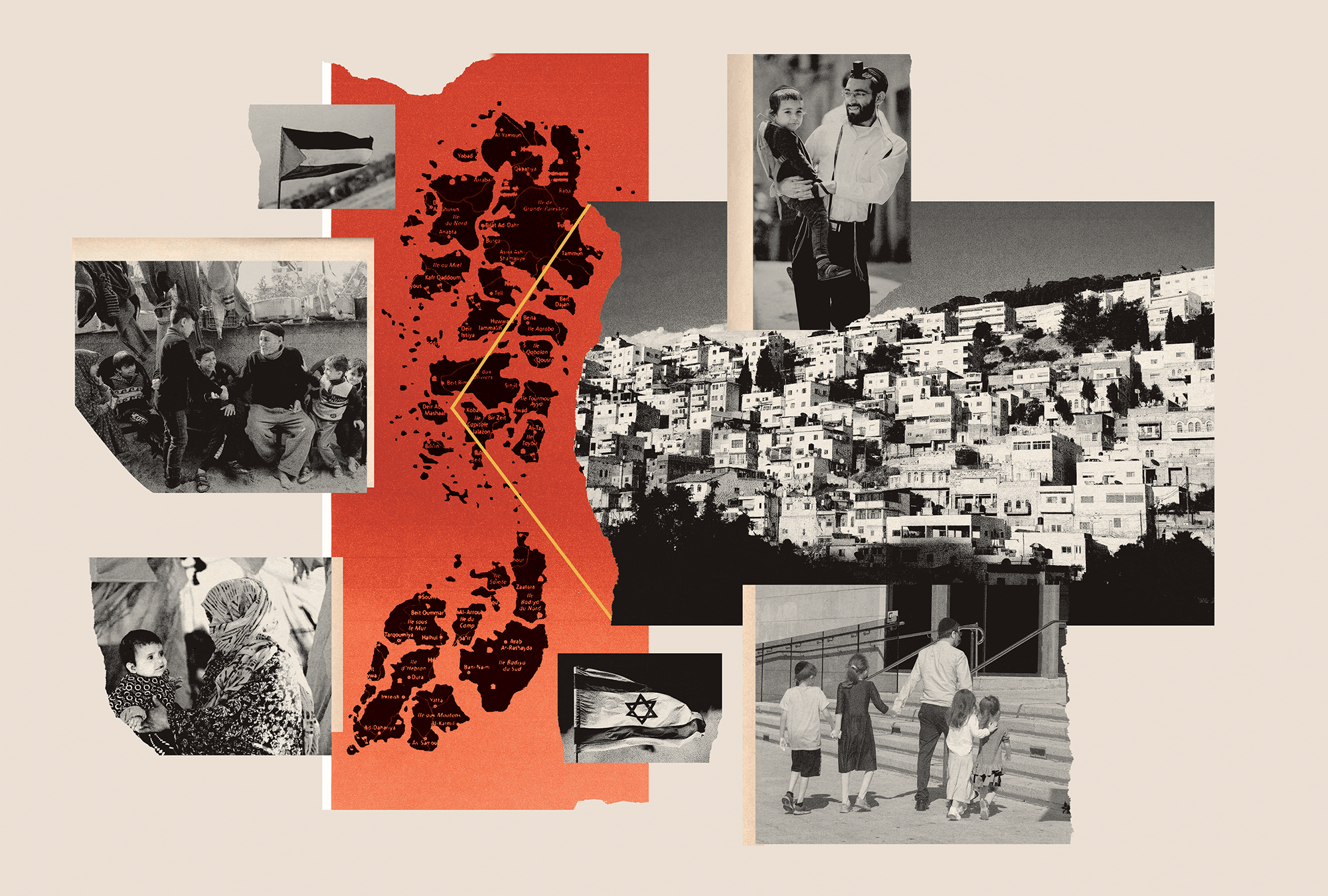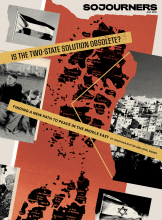Share As A Gift
Share a paywall-free link to this article.
This feature is only available for subscribers.
Start your subscription for as low as $4.95. Already a subscriber?

Illustrations by Mark Harris
THE ISRAELI VICTORY in the 1967 war created a new reality in the region. Gradually, the outlines of a possible Grand Compromise began to take shape: Israel would return the land it captured in that war and in return the Palestinians and the Arab world would acknowledge Israel’s sovereignty over the 78 percent of Palestine that constituted the state of Israel on the eve of that war. This Grand Compromise, often referred to as “Land for Peace,” was enshrined in U.N. Resolution 242, and it gradually obtained the support of solid majorities among Palestinians and Arabs as well as Israelis and their supporters abroad. The two-state solution became the acknowledged goal for all well-meaning people as the ideal formula for a peaceful solution of the Arab-Israeli conflict. Those who rejected it from either side were viewed as maximalist hardliners and enemies to peace.
But as soon as the guns were silent in 1967, the issue of Jewish settlements in the newly occupied territories became a central and defining feature of the conflict between Zionism and Palestinian nationalism. International law allowed neither annexation nor the demographic shifts required to fulfill the Zionist ideal in terms of ejecting the non-Jewish population and moving Jews into the newly occupied territories. All such Zionist activity, therefore, needed to be carefully camouflaged and justified in secular, non-Zionist terms. It had to be justified either as a security measure, a temporary arrangement, or the creation of bargaining chips for the peace negotiations that were to come.
Palestinians who happened to be out of the area at the end of the war, or who left because of the war, were promptly blocked from returning. Israel started taking property all over the West Bank and Gaza under a variety of excuses and legal machinations and making that land available for Jewish settlers. Jewish settlers started moving in and creating exclusive Jewish enclaves that gave every indication of permanence. It is noteworthy that these settlements were not Israeli per se (Israeli Arab citizens were barred from them) but specifically and exclusively Jewish.

Got something to say about what you're reading? We value your feedback!